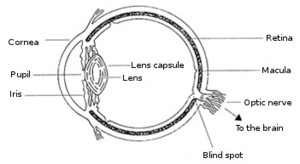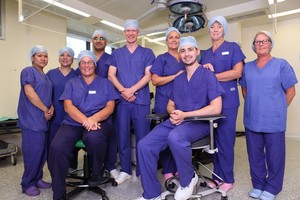
A Guide to Cataract Surgery
What is a cataract?
A cataract is a clouding of the natural lens of the eye causing blurred vision, glare or change in colour vision. The only treatment at present is an operation to remove the cloudy lens and replace it with an artificial lens.
What happens before the operation?
The eye is measured in order to calculate the correct strength of the artificial lens. On the day of the operation eye drops will be used to dilate the pupil.
What does the surgery involve?
The operation is usually performed under local anaesthetic, using either eye drops or an injection around the eye. You will be awake during the operation but you will feel no discomfort. For the small number of patients who are very anxious about their surgery the options of sedation or general anaesthetic can be discussed.
The cloudy lens is broken up with ultrasound and removed through a tiny incision in the eye – a process called phacoemulsification. The artificial lens is inserted into the eye through the same small incision. The incision is self-sealing and in the majority of cases does not require a stitch. With complex types of cataract a larger incision is sometimes needed which requires stitches.
At the end of the operation a shield will usually be placed over the eye to protect it from accidental rubbing and bumping. This is usually worn until the following day.
What happens after the operation?
You will be given eye drops to use four times a day unless otherwise requested. These drops are used to settle any inflammation and reduce the risk of infection. There may be a slight discomfort and redness for the first few days and the vision may be slightly blurred until the eye heals. I will check your eye again two to three weeks after the operation.
What can I do after the operation?
You should avoid heavy lifting, strenuous activities or swimming for two weeks but otherwise it is quite safe to return to many everyday activities. You should avoid washing your hair for the first week.
What about new glasses?
You will probably need new glasses after your cataract operation, particularly for reading. Normally you can visit your optician for new glasses four weeks after the operation.
What are the risks of cataract surgery?
Although the vast majority of patients who undergo cataract surgery achieve excellent results without complication, success cannot always be guaranteed. There are risks associated with any type of operation but fortunately serious complications with cataract surgery are rare. The risk of severe visual loss with cataract surgery is 0.1% (one in a thousand). Other less serious but more common risks are:
1. Rupture of lens capsule (<1%) which could mean it is more difficult to implant an intraocular lens.
2. Thickening of the lens capsule months or years after the operation which may require laser treatment to restore vision.
3. Macular oedema – an accumulation of fluid under the central retina which may affect vision.


